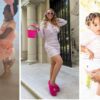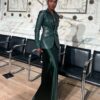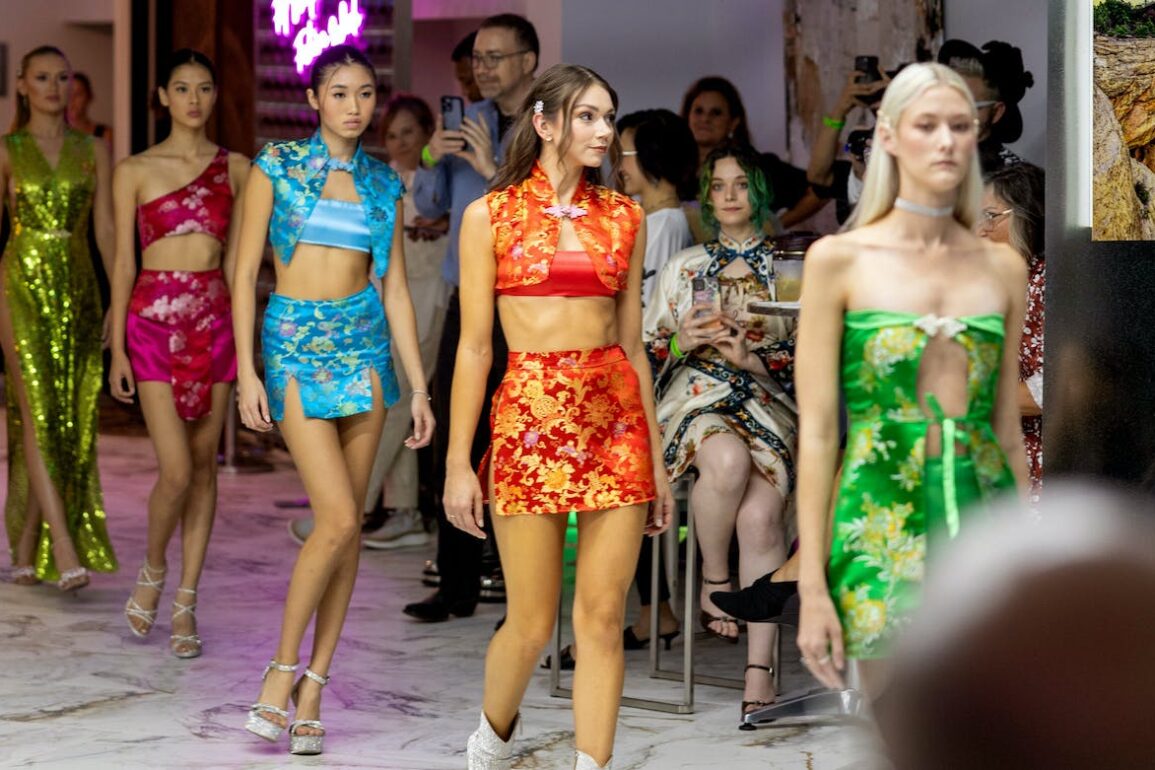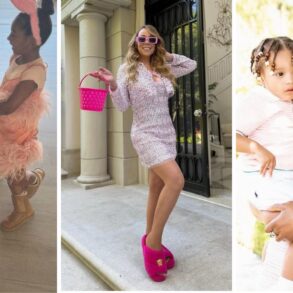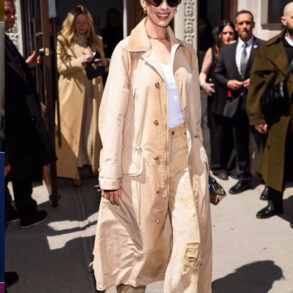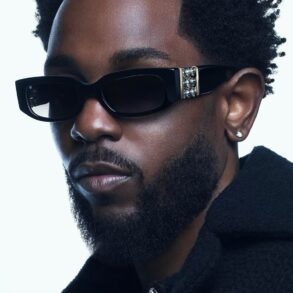How Fort Worth Became the Epicenter of Haute Cowboy Fashion
Hatbands embedded with rubies, $70,000 belt buckles: More than any other Texas city, Fort Worth is forging its own brand of style that melds high fashion and iconic Western wear.
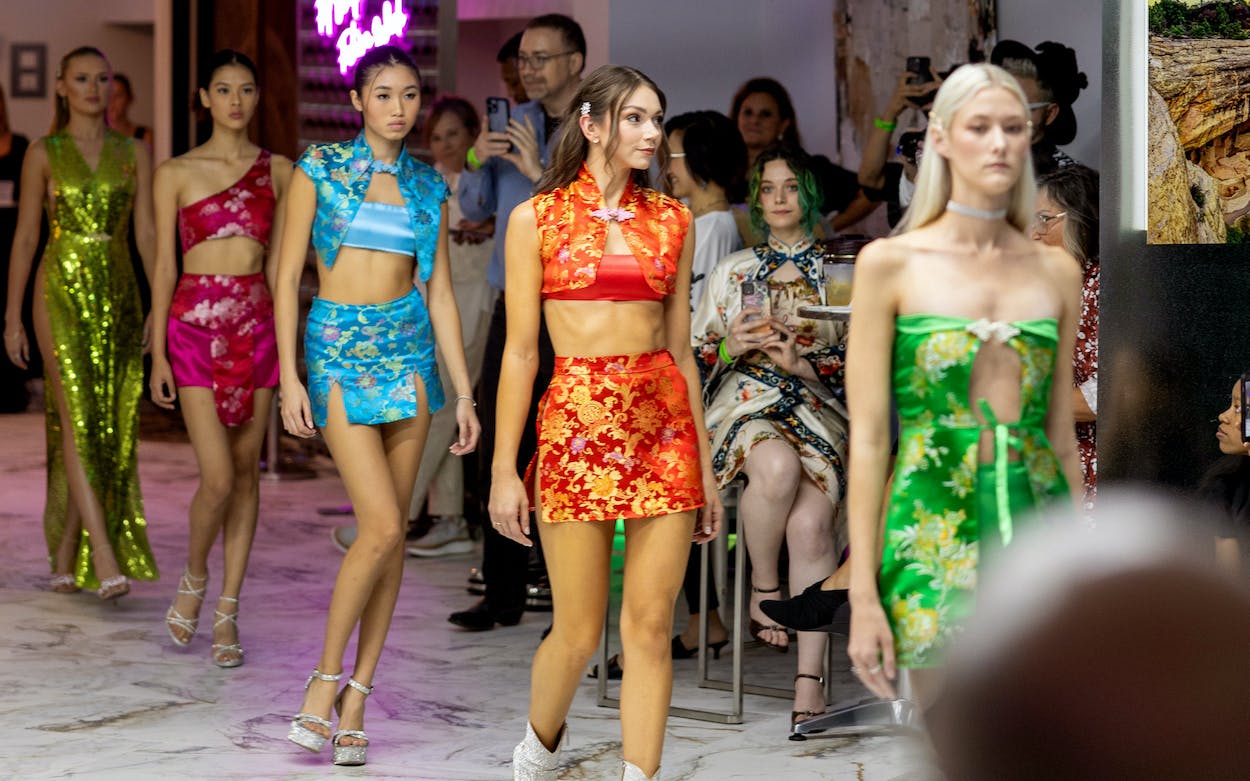
Courtesy of Fort Worth Fashion Week
On a warm night in September, the usual suspects of the fashion world—designers, influencers, magazine editors—filed into a new art gallery with a makeshift runway to watch leggy models in micro skirts strut their stuff to Sia’s “Unstoppable.” It easily could have been mistaken for a scene in New York or Los Angeles, save for a few tells: the word “y’all,” the cowboy boots. This was the first night of Fort Worth Fashion Week.
Some outfit elements—fringe, metallic boots, turquoise necklaces—were what you might expect from a crowd in Cowtown, the nickname given to Fort Worth for its ties to the historic Chisholm Trail and its still-thriving cowboy culture. But there were plenty of fresh takes, too. One man donned a cowboy hat and striped tee but tucked his jeans into motorcycle boots. I spotted an oversized, camel-colored suit that looked like it could have belonged to an eighties oil tycoon, accessorized with bright yellow sneakers and a yellow beret. The ensembles were both a nod to the city’s past and a glimpse of its rapidly evolving future.
Of the country’s largest cities, Fort Worth is growing the fastest, with approximately 53 newcomers arriving each day. Compared to Austin, which boasts a similar population size, Fort Worth is more racially diverse, and its median family income ($92,300) is significantly higher than both the United States’ and the Texas average (around $85,300). The city is also home to TCU’s fashion merchandising degree program, which ranks in the top 10 percent nationally. Students routinely land coveted internships with brands such as Ralph Lauren, Stuart Weitzman, and Tiffany & Co. In some cases, it’s their Texas ties that make the difference (one senior got a summer gig with Rihanna’s costume designer, Adam Selman, after mentioning she, too, was from Texas). All of these factors are undoubtedly shaping the local economy, retail, and the city’s distinct brand of style—but that’s much harder to put a price tag on.
On day two of Fashion Week, models in ready-to-wear looks walked circles around John Wayne’s souped-up Pontiac station wagon at the museum John Wayne: An American Experience. Later on, Macy’s and Nike debuted never-before-seen collections. In a follow-up to its hundredth anniversary and a collaboration with Gucci, Dickies—which started in Fort Worth in 1922—showcased a line of its signature workwear but kept it current with bucket hats and flared coveralls. Phillip Prany, a designer and founder of Mener Grand Train Co., orchestrated it all.
In 2018, Prany founded Fort Worth Fashion Week in his hometown to bolster local talent and shine a spotlight on Fort Worth style, which he describes as “Western, but with flair.” That ethos is apparent not just in the events he plans, but also in the people who attend. “They come out dressed to impress,” Prany says. “People in Fort Worth love fashion. I think they’ve just been waiting for something like this.”
Or, perhaps, the country has been waiting for Fort Worth. Earlier this year, the Wall Street Journal reported that the hit TV show Yellowstone had “suburbanites dressing like cattle ranchers.” We just lived through a summer of the coastal cowgirl aesthetic on TikTok. At a time when cities such as Nashville and Dallas look less and less like they once did, Fort Worth has made a concerted effort to preserve its Western roots, offering Hollywood (the Yellowstone spin-off 1883 films in Fort Worth) and every wannabe cowboy the chance to play pretend in an authentic atmosphere. In turn, the national spotlight has given Fort Worthians a bigger platform where they can express what modern Western style means to them.
Jessica Breslin owns two of the city’s most popular women’s clothing boutiques. Via email (because she was away at Paris Fashion Week) she told me that a love of color is a through line among her clients, regardless of age, lifestyle, or budget. Her boutique Birdie, located along charming Camp Bowie Boulevard, skews younger with trendier pieces. Bette’s, her more high-end offering, opened last year at the Shops at Clearfork alongside outposts from Burberry, Gucci, and Louis Vuitton. Bette’s was Breslin’s answer to “a void in the marketplace.” She wanted to introduce a “wearable cool girl aesthetic” at a luxury price point. Her store, and others, are an indication of how Fort Worth has leveled up. “In the 13-plus years I have called Fort Worth home, my clients’ style has evolved,” Breslin wrote. “They are not scared to take risks and embrace trends.”
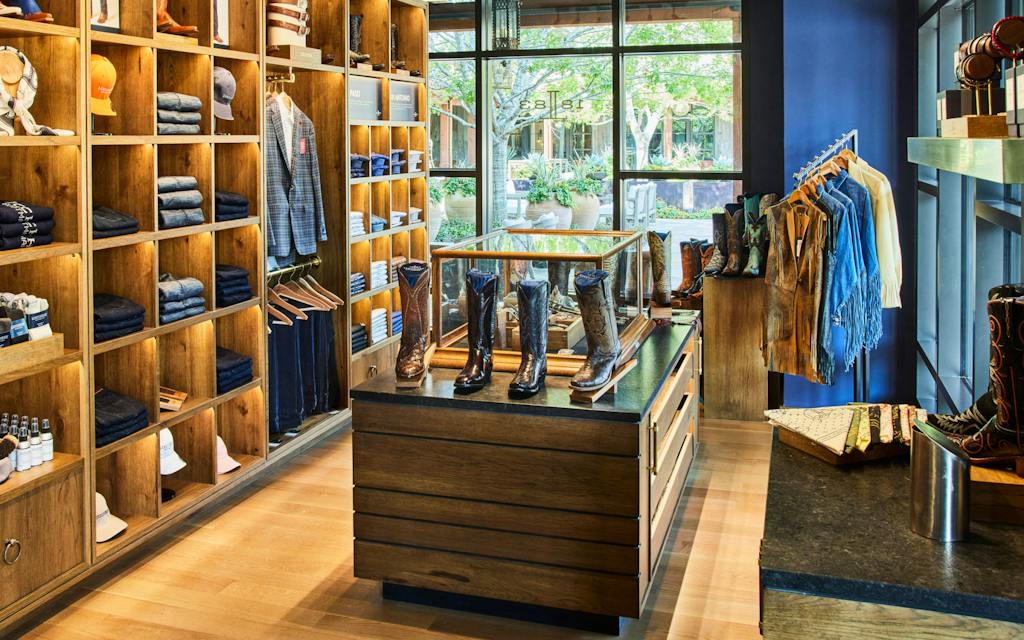


In no place is this more evident than the Stockyards—known for its daily cattle drives and weekly rodeo, but also its street style. The epicenter is Hotel Drover, a two-hundred-room boutique property with a swanky, urban ranch aesthetic and an impressive modern art collection. When I attended an on-site wedding this past spring, I expected to be greeted with what I remembered of Fort Worth from previous visits: Wrangler jeans, Stetsons, maybe a rhinestone or two. Upon entering the lobby, I was struck by the number of stylish locals posted up at the bar. There were still Stetsons, but in hues like teal and rust. One woman, sipping a cosmopolitan, sported a bold block print and a silk handkerchief expertly tied around her neck. I tried to place her—somewhere between Parisian and Prairie chic.
The Drover’s “elevated Western experience” prompted Lucchese to open its only custom collection store just off the hotel lobby. You can order customized boots at any Lucchese store, but this is the only place that offers a special fitting where they map the exact contours of your feet. And while a pair doesn’t come cheap, I’m told customers often see boots as an investment, akin to other luxury items like a designer handbag or heirloom jewelry.
“If you take good care of them, you can pass them down and they will last generations,” says Fallon Appleton, senior manager for brand communications at Lucchese. Appleton grew up in Fort Worth and is the daughter of Dave Appleton, a legendary bronc rider who, in 1988, won the all-around gold buckle (akin to winning Super Bowl MVP in the rodeo world). Her mom used to book talent for Billy Bob’s Texas, often touted as the world’s largest honky-tonk. In other words, Appleton has had a front-row seat to some of the biggest influences on Fort Worth fashion, which she says embodies “quiet luxury.”
“[Fort Worth] is really a melting pot of all different kinds of people who use Western fashion in their everyday look,” Appleton says.
Her words cause me to reflect on my own wardrobe. I grew up in Wyoming—the Cowboy State—but would have felt like a poser in Western wear. If you weren’t saddling up for a ride or actively working on a ranch, you wouldn’t be caught wearing it, lest you be mistaken for a tourist. Then, I moved to San Antonio for college, where cowboy boots were ubiquitous. Slowly, I’ve started to come around. Still, there’s a fine line between looking chic and like a caricature out of an old Western film, especially in Dallas, where I currently live, and the joke is often “all hat and no cattle.” But one weekend in Fort Worth, and I was ready to cast inhibitions aside and join the ranks of well-heeled ladies using Mule Alley as their personal runway (where actual supermodel Bella Hadid was spotted just last month).
The newest extension of the Stockyards, Mule Alley is lined with high-end shops, hat bars, music venues, and some of the best new restaurants in the city. It’s also where you’ll find Proper Supply Co., helmed by Cristina Faulconer, a creative director with pink hair, pink cat-eye glasses, and a belt buckle big enough to make a championship bull rider jealous. When she left Park City, Utah, and arrived in Fort Worth in 2020, she wanted to set the store apart and decided to source primarily American-made products and host frequent trunk shows.
“When you’re able to meet the artisan or hear the story, it feels like you’re doing something good,” she says. “Everything in the store is an extremely meaningful purchase.”
Stand-out items include hand-tooled sterling silver martini glasses; pillows made with vintage, Western-themed Hermès scarves; and shirts, designed by Faulconer, that combine classic yokes and pearl snaps with Japanese textiles and Italian linens. She also worked with Stetson to create a custom line, and offers in-store open crown hat shaping, an old-school process requiring steam and years of experience. Faulconer acknowledges that the high-dollar wares may not be for everyone (hats start at $700), but says there’s demand.
“We’ve sold some of the most insane things out of our store that I never dreamed we would sell,” she says, citing a $16,000 hatband with gold and rubies and a $70,000 belt buckle.
Everyone I spoke to talked about the intersection of Western style and the mainstream. But Faulconer and Prany don’t see it as a passing trend, and they’re intent on making sure you don’t either. In addition to the two seasons a year he plans for Fort Worth Fashion Week, Prany has also partnered with local high schools and five universities to help cultivate—and keep—homegrown talent. He describes the Fort Worth fashion scene as “a blank canvas.”
“There are a lot of options out here where brands and companies can get their foot in the door,” he says, “and we need more designers—there’s room for that.”
As for anyone who still thinks Western wear is old-fashioned? Prany has an answer for that, too. “We’re very up to date,” he says. “You can learn a thing or two from us.”
- More About:
- Style & Design
- Fashion
- Fort Worth
This post was originally published on this site be sure to check out more of their content.

